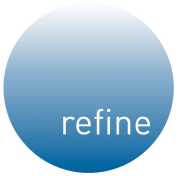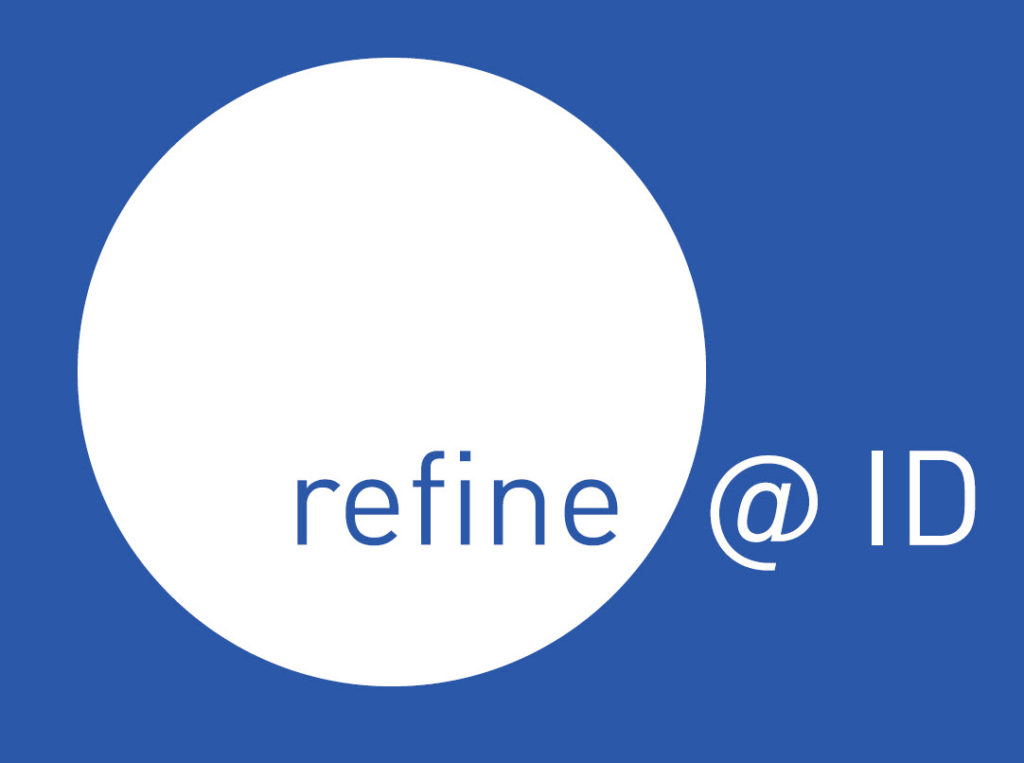A look behind the IT scenes at refine
ETH Zurich’s new resources and financial platform was successfully put into production on 9 January 2019.
refine = renewing the REsources and FINance platform of ETH Zurich
This important step marks the achievement of the refine project’s most important milestone. This success has, of course, been achieved thanks to effort of everyone involved. Congratulations to the more than 100 people in many ETH organisational units and several external specialists. For IT Services, it was the areas of basic technologies, development and porting of existing products, data migration and process design. This post will elaborate on the roll of IT Services.

Interview
ITS Blog: In recent years, refine has been described as «ETH’s most important non-academic project». Why has it been touted so highly?
Giorgio Broggi: refine deserves to be touted so highly as the project enables ETH Zurich to manage its finances and resources in a more up-to-date manner. This, in turn, will allow the school’s core activities (research, teaching, knowledge transfer) to be supported much more effectively – and also more efficiently. It is therefore an «enabling project», which is indeed located in the area of support processes, but it also has a significant impact on ETH’s main tasks. However, ambitious IT goals were also set within the scope of the project, and these were achieved in full.
ITS Blog: ETH has been operating an SAP environment for almost 20 years: why did such an extensive project have to be implemented instead of continuous renewal in small steps?
Giorgio Broggi: The SAP environment has undergone continuous development in terms of information technology: the system landscape, which was shut down as of 31 December 2018, was already based on the new SAP in-memory database technology S/4 HANA and on current versions of the application components. Two very different factors led to the big replacement step. The most important of these is the replacement of the single-entry bookkeeping system. Put simply, this is guided by the «piggy bank» idea. Financial volumes are measured in terms of expenditures that are debited from the «piggy bank» (funds). The single-entry bookkeeping system is still practised in many areas of public law. However, it makes it impossible to obtain a meaningful overview of incurred costs, especially in the case of projects lasting several years or after long-term investments have been made. refine introduces accrual-based accounting, a transparent cost view, the possibility of meaningful target/actual comparisons and everything necessary in the governance environment for the application of International Public Sector Accounting Standards (IPSAS). The second factor is SAP’s deployment of S/4 HANA, the third generation of the SAP software environment. The decision to build a completely new SAP landscape was practically pre-determined by these factors.
ITS Blog: Who supported the project professionally?
Giorgio Broggi: refine was run under the aegis of Robert Perich, Vice-President for Finance and Controlling, and was headed by Markus Knaus, Head of the ETH Controlling Department, and Clemens Gubler from the company Novo. However, many contributions have also been made by employees from other organisational units. In the area of HR management, for example, many far-reaching innovations were introduced and old customs stopped. This extremely complex work was carried out directly by the HR Department. And, of course, IT Services made a crucial contribution in every respect.
ITS Blog: In which project areas were ITS employees involved?
Giorgio Broggi: Contributions were made mainly in the following four areas: basic technologies, development and porting of existing products, data migration, process design.
André Hunziker: In the area of basic technologies, the main task was to acquire expertise in the area of HANA-DB and, based on this, to plan and set up the (virtualised) server infrastructure for refine. Installing the different types of required SAP systems (portal, gateway and S/4 HANA systems) in the sandbox, development, quality assurance and productive system versions, in addition to installing the communication connections between the systems, was of course very challenging and time-consuming. This was followed by the setup of the correction and transport system and system monitoring as well as the configuration and testing of the backups. Over the course of the project, the SAP software was upgraded several times. Supporting the project team with technical problems and everything that is ultimately necessary for the operation and maintenance of this infrastructure are ongoing tasks for us.
ITS Blog: Can the introduction of refine be regarded as a success?
Giorgio Broggi: Yes, for sure. There were problems and minor hitches popping up everywhere, but these were realistically to be expected in a project of this scale. The classic fly in the ointment was the initial problem with time management (SPAZ): although SPAZ represents maybe 5% of the functional ETHIS offering, many users (especially in ITS, where SPAZ is obviously used to the full extent) got a negative first impression of the new ETHIS. However, this has to be weighed up correctly. We can be proud of the achievement of ETH – and ITS – in realising this key milestone of the project… now the work goes on: Before refine is completed in spring 2020, many products still need to be ported and developed, and some «ETH specialities» (perhaps also time management) need to be brought back to the SAP standard.

Main stakeholders on the ITS side
ITS BD for basic technologies
- Markus Eugster (document conversion and archiving; adaptation of scanner profiles, SAP-GUI configuration for S/4 HANA systems)
- André Hunziker (planning and construction of the (virtualised) server infrastructure for refine, installation of the different types of required SAP systems (portal, gateway and S/4 HANA system as sandbox, development, quality assurance and productive systems). Setting up communication links between systems, correction and transport systems and system monitoring. Configuration and testing of backups. Multiple upgrades of SAP software during the course of the project, support of the project team in case of technical problems, infrastructure operation)
- Gabi Maier (SAP basic support and everything in the area of SAP HANA databases)
ITS SWS for development and data migration
- Charly Bärlocher (document conversion and archiving, migration of the old 3.8 million TIFF/JPEG documents into PDF/A format)
- Carmine D’Agostino (Overall responsibility for SAP development for purchasing procurements (e.g: ETHIS ETH webshop, furniture shop, order via webshop of an ext. supplier (Sigma-Aldrich), procurement request and backend processing of procurement in SAP), migration ETHIS ESS (personal data, employment & wages)
- Sacha Eckenstein (central development objects, search aids, expense recording (EAS), supplier invoice recording (KNG))
- Paul Föhn (responsible for all additional developments in the SAP-HCM module, area of responsibility covered all possible steps of a software development life cycle: determining requirements, analysis, feasibility, design, coding, testing, integration etc.)
- Markus Kreuzer (adaptation of the interface of personal and employment data from SAP to the OIS database)
- Walter Niederer (porting of payment transaction components; invoicing, incl. tuition fees and library, porting of various FI components, technical implementation of the migration of financial data)
- Corsin Sgier (overall technical responsibility for process integration and interfaces; connections to Publica, ASVZ, Karte-MA, various federal offices, library, Daylight, Sigma, IT Shop, archiving, Provis, Postfinance, SIX etc.).
- André Wahlig (overall technical responsibility for portal components, adaptation and porting of the SNF-ETH interface, technical and procedural implementation of two-factor authentication for SAP GUI users)
Additional ITS participants
Many other ITS colleagues also indirectly supported the project.
ITS PPF
Jürg Häubi, Sonia Messere, Gerhild Müller (processing procurement applications and KNG as testers, CCSAP meetings), Eva Alonso, Roman Windlin (accompanying several ITS processes with regard to refine), Paul Signer (connection IT shop and ETHIS with regard to refine), Dordaneh Arangeh (procurement issues, controlling processes for ITS, CCSAP and EKK discussions, cooperation in internal accounting processes and internal shops).
Further ITS SWS participants
Axel Reich, Werner Meili («KarteMA»), Paul Jesenak (GMIS Integration), Silvio Mombelli («FakturierungsSS Rkt»), Zeljko Rakazovic (Load tests), Andreas Jost («OrgDB», Integration Support, HR Entry)
IT Services would like to thank them all for their support.
Rui Brandao, Director of IT Services & Giorgio Broggi, Head of ITS Software Services, IT Services

More
refine – also a big project for ITS (ITS Blog)
Excerpt from the brief information about the ETH project
Why a renewal?
ETH Zurich’s existing resource and financial platform is an SAP system that was implemented in 1999. Since then, ETH Zurich and its environment have changed considerably. The volume of third-party funds has risen sharply, the regulatory standards for sponsors and for accounting by public institutions have become more complex and the need for differentiated management information has increased.
Guiding principle
With refine, a «second generation» financial and resource platform is being developed for ETH Zurich that will continue to ensure ETH Zurich’s financial management at all levels in the future. refine aims to make resource management at ETH Zurich more consistent and transparent. To this end, the complexity of existing processes and systems is being reduced. When setting up the new process and system standards, business values are just as important as ETH Zurich’s proven cultural values. The principle of integral and autonomous resource management is being further strengthened. Proven values, such as the principle that ETH Zurich’s financial management supports academic development, are maintained and given a more open and sustainable basis.
Where do we want to go? The aim of the project is:
- de-complexify. Simplification and standardisation of processes and systems, more alignment with business management standards.
- Modern conception of finance and accounting. Movement towards budgets (planned costs) and actual costs instead of «cash in hand».
- Increase of transparency for those who need it. Better understanding of large cost flows and costs of cross-sectional units (platforms, etc.).
- Flexibility and responsiveness. Resource management for professorships will become simpler and more flexible. Individual units as well as ETH Zurich as a whole will be able to react more easily to requirements and have faster access to decision-making information.
- Introduction of a new SAP ERP platform as carrier of the new concept, further development of the proven ETHIS portal for users.
- Compliance with the relevant regulatory requirements. The overall concept of the new resource and financial platform was approved by the Steering Committee (model approval December 2015, technical concept approval December 2016).
erstellt am
in News


